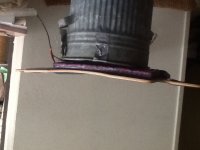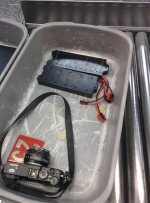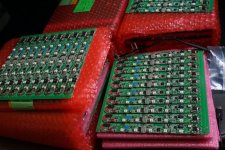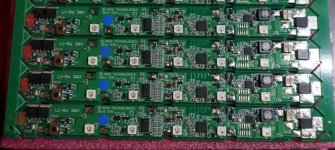Part of the reason I am following this is that I think it is not a horrible thing to only have to replace a 5P "sub pack" instead of keeping the ability to open and replace a single cell in a string.
There is a market for a loose-cell pack like the NTS/snath-style box. When the cells wear out, dump them and slip in new loose cells. One cell goes bad? find it and swap out. However...in the real world I think those benefits are over-hyped (no problem if that is your thing). If I had a pack made from 12 series-ed sub-packs (each 5P), and one cell in one sub-pack went bad? It would be very sweet to be able to just unplug and swap-out one 5P sub-pack...$3 cells X 5 = $15, maybe $40 retail? This would be a real boon to ebike shops and ebike rental outlets...
The same process and assembly line could be used to make 1P/6S packs for powerboards (or any other combo that works for any particular customer demographic...)
There is a market for a loose-cell pack like the NTS/snath-style box. When the cells wear out, dump them and slip in new loose cells. One cell goes bad? find it and swap out. However...in the real world I think those benefits are over-hyped (no problem if that is your thing). If I had a pack made from 12 series-ed sub-packs (each 5P), and one cell in one sub-pack went bad? It would be very sweet to be able to just unplug and swap-out one 5P sub-pack...$3 cells X 5 = $15, maybe $40 retail? This would be a real boon to ebike shops and ebike rental outlets...
The same process and assembly line could be used to make 1P/6S packs for powerboards (or any other combo that works for any particular customer demographic...)






